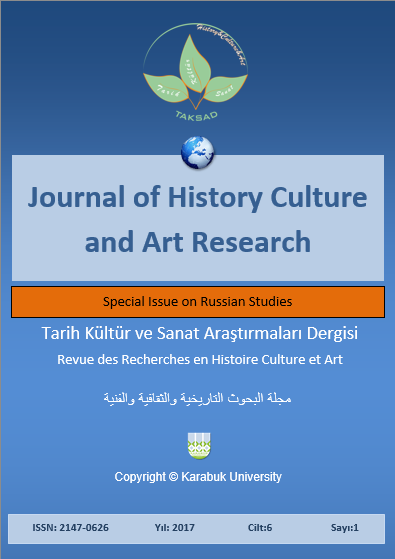The Development of "Immigration to Europe" Topic in the Time History of Speech Pattern Changes on the TV News
DOI:
https://doi.org/10.7596/taksad.v6i5.1289Keywords:
Speech dynamics, The television speech, Migration to Europe, Information programs, The Russian television.Abstract
The migration subject from the countries of North Africa and the Middle East to Europe was one of the main subjects of 2015-2016 on the Russian television, in particular, in information programs. In the real research we also explore the period from May 15 to May 22, 2017 with the purpose of tracking the appeal of journalists to this subject a year later after its active lighting in world media. At the same time the analysis of speech dynamics changes in texts of information programs on the basis of which conclusions on this research were drawn became a main objective. Let us note that several scientific approaches to a research of the television speech are known: lingual-and-stylistic, social-and-linguistic, psycho-linguistic, culturological, structural, system, functional approaches. In literature are in this regard described also effect of priming and cultivation. Besides, the new information era and a variety of information sources led to information overload which became a studying subject for representatives of cognitive sciences. Language and stylistic features of the television speech on an immigration subject in the real research are considered as a telespeech implementer in communication aspect. The research of its internal linguistic component, including phonetic implementers, became a basis of their studying. Results of the research conducted on the basis of the Kazan Federal University are given in the article. The author shows two-year speech dynamics changes in plots of information releases of the central TV channels with the universal programming strategy concerning a subject of mass migration to Europe.
References
Gaymakova, B. D.; Makarov, S. K.; Novikov, V. I. & Ossovskaya, M. P. (2004). The Art of a radio performance. Moscow: Aspect Press.
Gentzhkow, M. & Shapiro, J. (2004). Media, Education, and Anti-Americanism in the Muslim World. Journal of Economic Perspectives, 18(3).
Gentzhkow, M. & Shapiro, J. (2005). Media Bias and Reputation. Working paper. National Bureau of Economic Research.
Gerbner, G. (1994). Growing up with Television: The Cultivation Perspective. In J. Bryant & D. Zillmann (eds.), Media Effects: Advances in Theory and Research. Hillsdale: Erlbaum.
Kiriya, I. V. & Novikov, A. A. (2017). History and theory of media: the textbook for higher education institutions. National Research University Higher School of Economics. Moscow: Prod. H. Higher School of Economics.
Klapper, J. (1960). The Effects of Mass Communication. New York: Free Press.
Osgood, Ch. (1988). Psycholinguistics, Cross-Cultural Universals, and Prospects for Mankind. Westport: Praeger Publishers.
Sarukhanov, V. A. (2002). Alphabet of television. Moscow: Aspect Press.
Shesterkina, L. P. & Nikolaev, T. D. (2012). Technique of television journalism: Manual for students of higher education institutions. Moscow: Aspect Press.
Vasilyeva, T. V. (2004). Course of radio television journalism: studies. Grant. In S.Y. Agapitova & E.P. Pochkay. St. Petersburg: Special Literature.
Zoobok, A. S. (2012). Television business. Moscow: ANO School Publishing and Media of Business.
Downloads
Published
How to Cite
Issue
Section
License
All papers licensed under Creative Commons 4.0 CC-BY.- Share — copy and redistribute the material in any medium or format
- Adapt — remix, transform, and build upon the material for any purpose, even commercially.
Under the following terms:
Attribution — You must give appropriate credit, provide a link to the license, and indicate if changes were made. You may do so in any reasonable manner, but not in any way that suggests the licensor endorses you or your use.
- No additional restrictions — You may not apply legal terms or technological measures that legally restrict others from doing anything the license permits.







